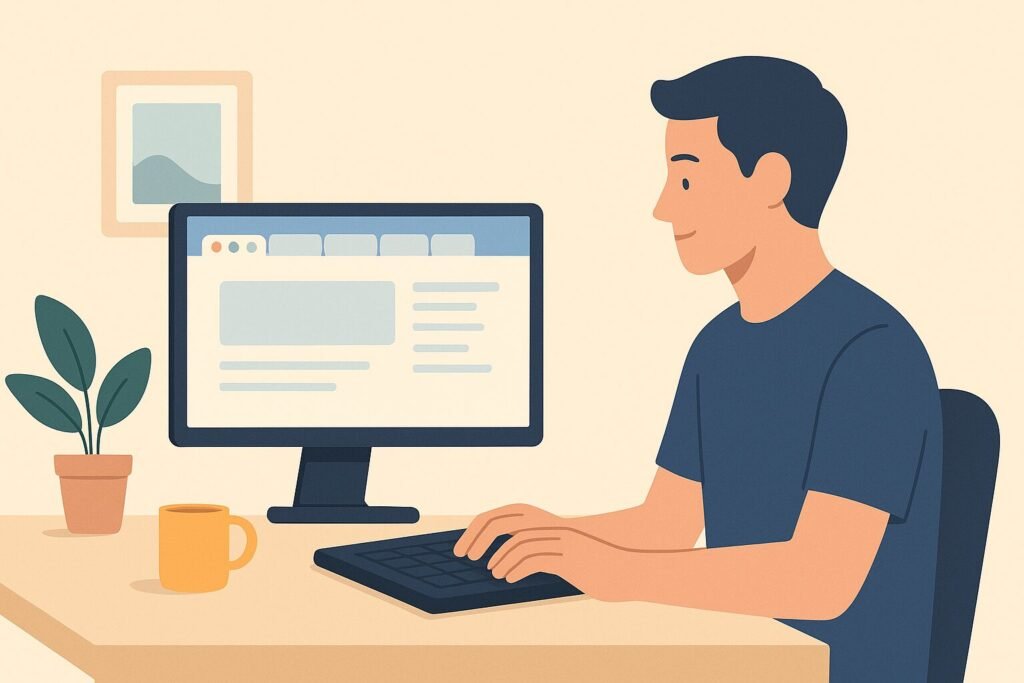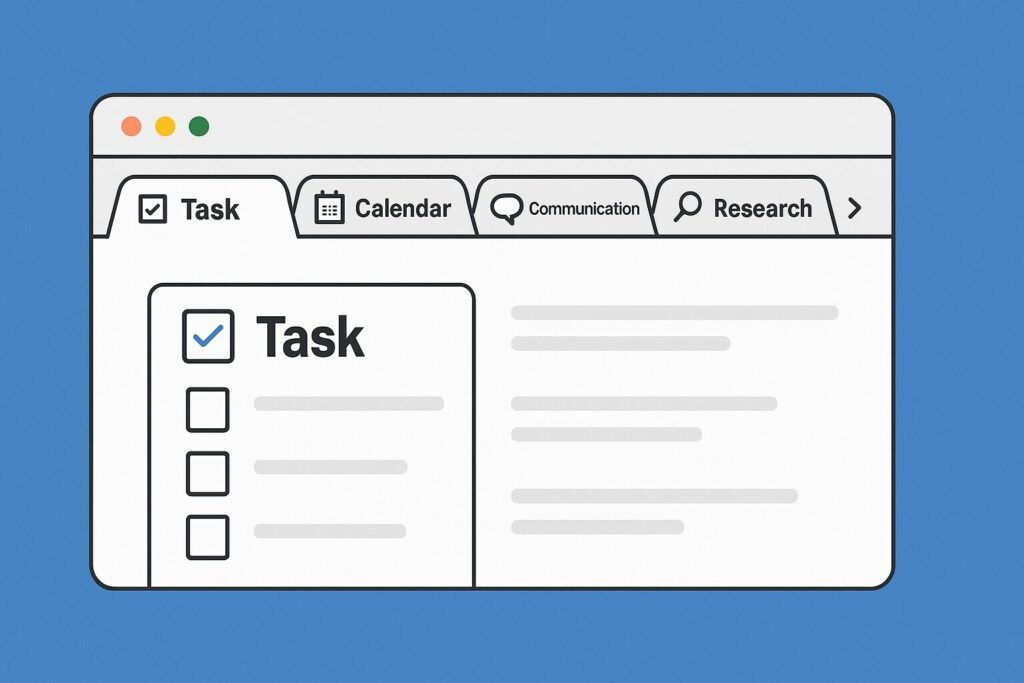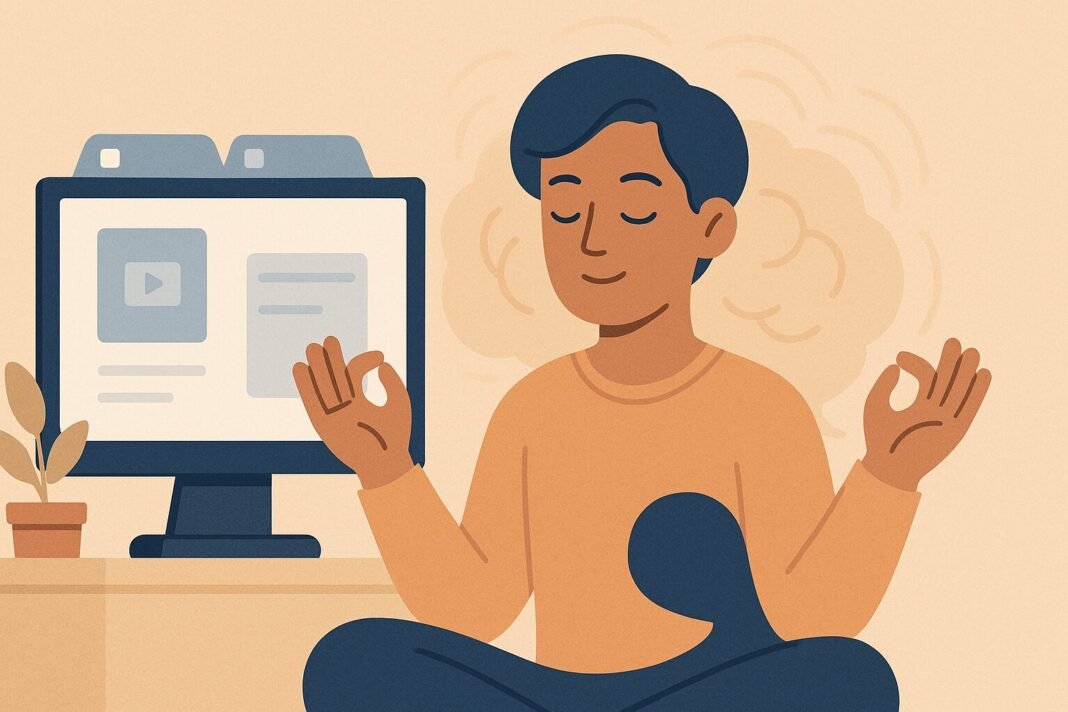
Tab limit productivity is a simple yet powerful habit that can clear your mind, boost focus, and reduce anxiety caused by digital overload.
Some days, my brain feels like it has 34 tabs open and it turns out, that’s literally true. I’d glance at my browser and see dozens of little icons, each silently demanding attention. My mind would start to mirror the mess: scattered, anxious, unable to focus. That’s when I discovered the one rule that calms my digital chaos and instantly clears my mental fog.
Table of Contents
The Rule: Never Exceed Five Tabs

This is it. My rule is simple: At any point in the day, I never let my browser exceed five open tabs. Five tabs is the sweet spot. Enough to let me multitask strategically. Not enough to fry my working memory.
If I’m tempted to open a sixth, I stop. Then I ask, “Which tab is least essential right now?” and I close it. Only then do I open the new one. It forces a tiny moment of intentionality, and that micro-decision alone is enough to shift my entire mindset from reactive to deliberate.
Why the Tab Limit Productivity Rule Exists
I didn’t invent this rule from a productivity book. I created it after a full-blown browser meltdown. I had over 30 tabs open, multiple windows, and no idea why I had opened half of them. My laptop fan was screaming. My brain felt the same.
Then I remembered something from cognitive psychology: Our brains don’t like open loops. Every tab you leave open is a loop your brain hasn’t closed. Even if you’re not reading it, your subconscious keeps trying to remind you: “Hey, you haven’t dealt with this yet.” Multiply that by 10 or 20 tabs, and you’ve got a nervous system that’s perpetually in unfinished-business mode.
The Neuroscience Behind It
The average person can only hold 4–7 items in their working memory at once. That includes all the tabs in your brain, conversations you’re holding onto, to-dos you haven’t written down, and yes, browser tabs with headlines or unread articles.
Each open tab is like a post-it note stuck to your prefrontal cortex. It doesn’t matter if it’s muted or minimized. Your brain sees it and flags it as unresolved. That unresolved state keeps your stress system lightly activated, like a car idling in traffic.
Research on attention residue shows that even when we switch away from a task, part of our brain stays stuck on what we were doing before. More tabs = more residue = more distraction.
By limiting your tabs to five, you’re clearing that cognitive clutter. You’re reducing “mental friction” every time you move from one task to another. And you’re training your brain to prioritize.
Why Five?
Could it be six? Sure. Could it be three? Absolutely. But five feels like the Goldilocks zone:
- One tab for your primary task (e.g., writing, editing, building)
- One for your task list or calendar
- One for research or reference
- One for communication (Slack, Gmail)
- One for music or ambience
Beyond that, tabs become clutter.
What This Rule Solves
- Anxiety from digital overload: You stop seeing dozens of half-finished thoughts every time you glance at your screen.
- Decision fatigue: You don’t have to choose from 20 browser tabs. Just five.
- Context switching: You become more present with the tab in front of you.
- Laptop performance: Fewer tabs = faster machine. No more spinning fans.
When to Use the Tab Limit Rule
- First thing in the morning: Before you get sucked into emails or articles, reset to five.
- During deep work sessions: Especially helpful if you’re writing, designing, coding, or problem-solving.
- Before meetings: So you can show up clear and distraction-free.
- When you feel overstimulated: If your mind is racing, your tabs probably are too.
The Psychology of Closing Tabs
There’s a hidden reward in closing a tab: it signals completion. And micro-completions, as small as they seem, build momentum. They reinforce that you’re in control of your attention. They remind you that you have agency over your environment. And they give your brain a little “closure hit”, a micro-dose of dopamine without the doom scroll.
How to Make It a Habit
- Set a Tab Limit Reminder: Use a sticky note or Chrome extension (like OneTab) to nudge you.
- Anchor It to a Trigger: Every time you start a new task, check your tabs first.
- Treat Tabs Like Real Estate: Every tab costs attention. Only keep what earns its rent.
- Build a “Tab Triage” Ritual: Once per day, do a 2-minute tab cleanup.
Bonus: Batch Your Curiosity
What if you stumble across an article you want to read but it’s not urgent? Save it to a reading tool like Pocket or Notion. This way, you honor your curiosity without clogging your browser.
Real-World Benefits I’ve Experienced
- I think clearer and faster.
- I finish more tasks without starting new ones mid-way.
- I feel calmer when I look at my screen.
- My MacBook fan no longer sounds like a jet engine.
Quote to Anchor the Habit
“You don’t rise to the level of your goals. You fall to the level of your systems.”, James Clear
The 5-tab rule is a system. It’s not fancy. But it works.
Try This Now
Take 60 seconds. Open your browser.
Close every tab until you’re down to five.
Feel that wave of mental space rush in? That’s not a placebo. That’s your nervous system saying thank you.Want to go deeper?
→ Read: [How to Regain Focus in 5 Minutes or Less]
→ Subscribe to Daily Mind Boost for brain-friendly tips every week.





